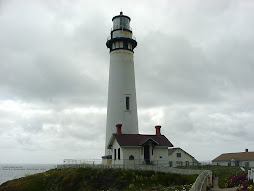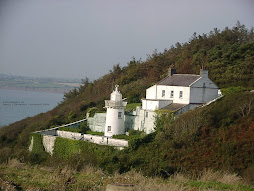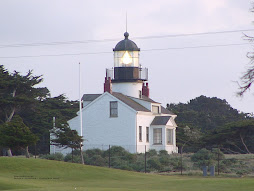FIRE
FIRE ON DECK:
In the event of fire on deck or in the cabin areas, there are three dry chemical fire extinguishers available. These are located:
a. In the cabinet under the aft deck wet bar.
b. In the aft cabin closet.
c. Under the port seat in the cockpit.
To use these units, you should:
1. PULL THE PIN from the extinguisher handle.
2. POINT THE NOZZLE of the extinguisher at the BASE of the flames.
3. SQUEEZE THE HANDLE and sweep the powder stream from side to side.
4. WATCH for re-flash and be prepared to use additional units if needed.
Should the fire be in bedding or a cushion, water may be needed to extinguish the remainder of the smoldering materials. Use copious quantities of water from the galley and pour on the fire as needed.
FIRE IN THE ENGINE ROOM:
A. WHILE UNDERWAY; ALSO WHEN HATCHES ARE CLOSED:
In the event of a fire in the engine room, DO NOT OPEN THE HATCHES. Shut down all engines, machinery, and blowers. The fixed Halon extinguishing system will actuate and should extinguish the fire. Any further fire extinguishing efforts should be undertaken carefully, as opening the hatches may result in flare up of incompletely extinguished materials. If you MUST open the hatches, stand by with an extinguisher at the ready and do so very carefully.
B. WHEN HATCHES ARE OPEN:
This should be treated as a cabin or deck fire and hand portable extinguishers used as above. However, if the fire cannot be controlled with hand extinguishers, it is likely best to close the hatches and wait for the fixed Halon extinguishing system to activate. Then, handle as above.
PERSONAL FLOTATION DEVICES
(LIFE JACKETS)
(LIFE JACKETS)
A personal flotation device has been provided for every person on board this vessel. These are for your own protection. The sea is a very unforgiving environment, and you can't stay afloat long without a life jacket. Life jackets or life vests are located in the yellow "LIFE JACKET" bag in the cockpit and also in the compartment under the port side mates seat in the cockpit.
Read the instructions on the life jacket or vest for complete information on how to put it on and fasten it securely. If you don't know how to use it, ASK THE CREW NOW. We'll be glad to show you how. Don't wait until you really need it to ask.
If you do not swim, you should wear your life jacket at all times, particularly when you venture outside the cabin or cockpit areas. Even if you are a good swimmer, you should wear your life jacket whenever conditions warrant. And, during severe sea conditions, or whenever the captain indicates he believes it is prudent to do so,
EVERYONE WILL WEAR THEIR PERSONAL FLOTATION DEVICE!
Children who do not swim will be required to wear life jackets at all times. Parents or guardians will be asked to bring appropriate personal flotation devices for their children, and will be expected to do so. We will make every attempt to accommodate everyone with the correct size life jacket, but if there is even one person who does not have an appropriate personal flotation device available, WE WILL NOT LEAVE THE DOCK! No day on the water is worth endangering a human life.
W E L C O M E A B O A R D
Welcome aboard the Gypsy Rose II. We're glad you're here and hope you enjoy your time aboard.
A boat is much different than a house or car, and some systems are very temperamental, so I'd like to point out some very simple rules we all live by while on board:
1. YOUR PFD or LIFE JACKET: There is a PFD (Personal Flotation Device) for everyone on board. Be sure you know where they are and how to put them on. If you have children with you, it's YOUR responsibility to be sure they wear their PFD whenever necessary.
2. NO SMOKING. There is no smoking allowed on board. If you must smoke, please feel free to step out on the dock, away from the vessel. While we are underway, feel free to step off the swim platform. (Take your PFD!)
3. THE TOILET: We call it a HEAD, and the simple rule is; IF YOU HAVEN"T EATEN OR DRANK IT FIRST, IT DOESN'T GO IN THE HEAD. No papers, paper towels, sanitary napkins, tampons, diapers, baby wipes, cloth, pins or anything else. These will clog the unit and make life miserable for ALL on board. Before you need to use it, please ask us to show you how it works.
4. The GALLEY (kitchen) sink: Again, please refrain from putting anything down the sink except water. We don't have any plumbers at sea.
5. GARBAGE: Please place all trash and garbage in the trash cans provided in the cabin and in the cockpit. In addition to saving our environment, it's illegal to dispose of trash and garbage carelessly.
6. PLASTIC: Please be sure that all plastics, regardless of how small or insignificant the pieces seem, are discarded in the trash cans. While plastics make our life better, they severely endanger the marine environment. And, again, it's the law.
7. ZERO DRUG TOLERANCE: We do not condone nor will we allow the use of or carrying of illicit drugs aboard this vessel. If you are carrying or using illegal drugs, LEAVE NOW. You are not welcome aboard and will be reported to authorities.
Please take a few minutes and review the information in this manual. We always expect a smooth voyage, but we always like to be prepared in the event things don't go just the way we planned.
Again, WELCOME ABOARD and ENJOY THE DAY.











